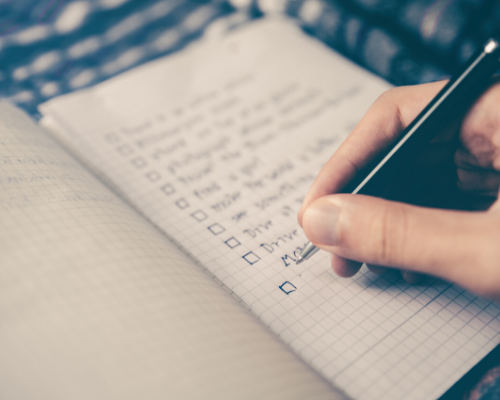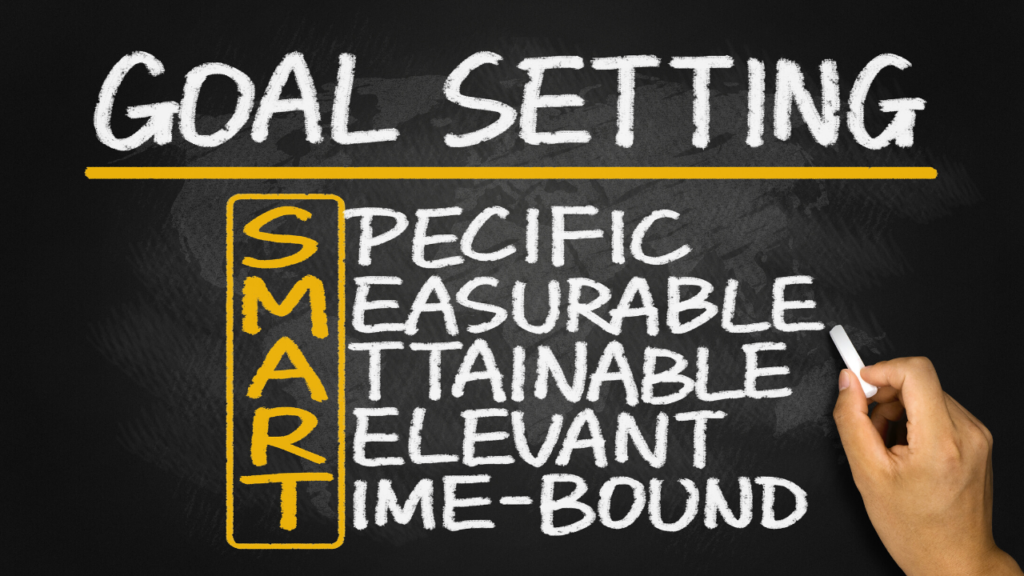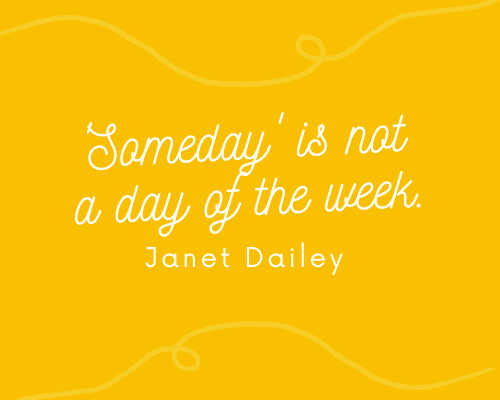It may seem odd to be talking about this before Christmas, but now is actually the best time to start thinking about next year. You may not have much time before Christmas to really think through your goals, but jot things down as you think of them, and then see if you can spend some time between Christmas and New Year’s mapping out your goals.

Many of us make resolutions on January 1st, but we go into it a little blindly. I’m going to share my best tips for how to set yearly goals. Goals are different from resolutions because they have destinations, an ending point—unlike resolutions, which are just kind of happy suggestions for what might happen in the coming year.
How to Set Yearly Goals (and Follow Through with Them)
Set only a few yearly goals
The first mistake a lot of us make is overwhelming ourselves with too many goals.When you’re choosing your goals, you’re most likely going to choose from one of these categories:
· Family
· Career-related
· Financial
· Educational
· Attitude/Spiritual
· Physical
Try writing down a few goals, then thin them out to the ones that are most realistic and practical for this particular year. Consider the things you know will be happening in the new year: Are you having a baby? Traveling a lot? Moving to a new town? These factors should influence the goals you set.

Set SMART goals
Remember that good goals have a deadline. If you don’t have a deadline to work toward—like the end of the year—then you’ll start procrastinating and be no closer to finishing your goal by the end of the year.
One way to set goals is by making them SMART goals. Keep these suggestions in mind when you’re setting your yearly goals:
Specific: Rather than “Read more books,” your goal might be, “Read 50 books by December 31.”
Measurable: Set a goal for which you can measure your progress throughout the year. Goals with numbers attached are easy to measure.
Achievable: Is it actually achievable? Setting a goal of reading 250 books really might not be possible for all but a few people.
Realistic & Relevant: Goals must be challenging yet attainable given your time frame and resources. For example, if you only read 4 books last year because you a work full-time and have young kids at home, then reading 50 books may not be realistic.
Time-bound: Without a time-frame, the goal is just a sloppy suggestion. A year is a good frame of time for many goals.

Set seasonal or quarterly goals
If yearly goals are too big of a frame of time, then you could instead set seasonal or quarterly goals by breaking down those yearly goals. Maybe you know that at the beginning of the year, you won’t have much time to read. If your goal is to read 50 books over the course of the year, then maybe you’re only going to try to read 8 books between January and March, but you’ll make up for that in the summer when you have more time.
Because I have kids who are school-age, our year is divided into two semesters and a summer, and those time periods often look different from each other. The fall semester is busy with new routines and all the holidays, while the spring semester is more laidback. Then the summer is it’s own thing! I take all this into account when setting goals.
Set monthly goals
Once you have your yearly goals set, think about smaller, practical goals to help you reach your big goal. If your goal is to read 50 books, break it down into how many books you need to read each month (about 4 or 5).

Monthly goals help you keep on track. It’s easy to think that you have a ton of time when it’s January 20th and you have 48 books left to read. Soon, you’ll start pushing off your books further and further until the end of the year, and suddenly it’s November and you’re 20. Set monthly goals to know that you’re staying on track to meet your goal at the end of the year.
Set daily goals
Just like reaching your yearly goals doesn’t magically happen, neither do monthly goals. You need a game plan. Plan out what your strategy looks like each day. Even if you’re laying in bed the night before and planning out how you’ll meet your daily goal the next day, that’s a strategy you can work with. Keep up with your daily goals to keep you motivated and don’t forget to celebrate the little victories.
I find it helpful to look back on the last year and think about what might need to change in order to reach my goal. If my goal is to read 50 books, maybe asking for a Kindle for Christmas will help that goal. Or maybe I just need to start going to bed earlier so I can get up earlier and have time to read before everyone in the house is awake. Reaching your goals won’t just happen—it takes strategizing and intentionality.

Give yourself grace
Remember that you’re hopefully making these goals to improve your life in a positive way. If you’re having trouble working toward a goal, then take some time to re-evaluate why you’re trying to reach that goal. Maybe in June you need to re-examine and change your goal. There is no shame in that, because your goals should serve you! Give yourself grace and remember that big changes take many small steps, day after day.
For more on goals, check out Six Ways to Reach Your Goals!


